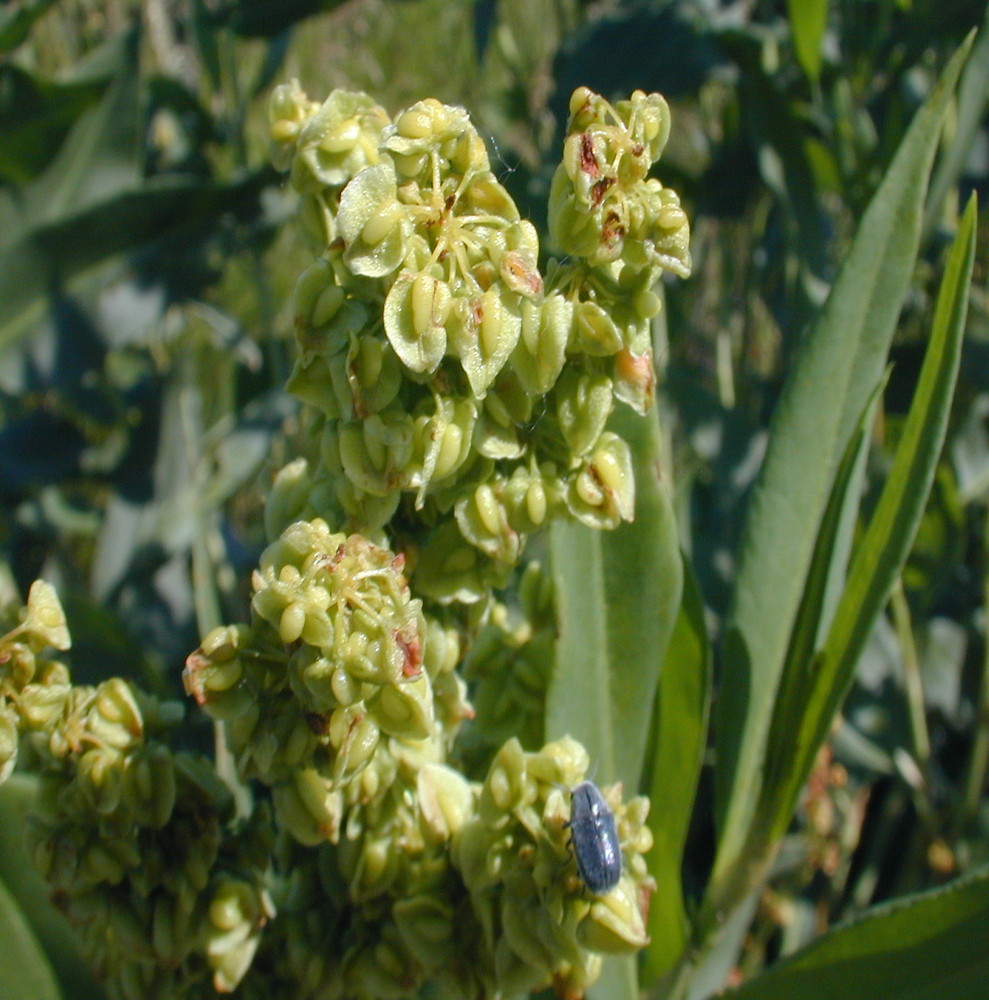Pale Dock
(Rumex altissimus)

Description
Rumex altissimus This perennial plant is 1--4' tall and either unbranched or sparingly branched. The stout central stem is light green, terete, and glabrous; longitudinal veins may be visible as fine lines of medium to dark green. The alternate leaves are up to 10" long and 3" across, becoming smaller as they ascend the stems. The leaves are lanceolate or oblong-lanceolate in shape and short-petioled, while their margins are smooth (entire) and non-wavy. The leaves are yellowish green or green, glabrous, and their upper surfaces are often shiny, rather than dull. At the apex of the plant occurs an erect inflorescence about 4-12" long that branches occasionally. This inflorescence has dense whorls of small green flowers on drooping pedicels. Each flower is about 1/8" (3 mm.) long and it has 6 green sepals, sometimes with yellowish or reddish overtones. The blooming period usually occurs during early summer and lasts about 2 weeks. If a disturbance lops off the central stem, this plant may bloom later in the year. There is no floral scent. The flowers are cross-pollinated by the wind. Afterwards, the flowers are replaced by tripartite achenes that are initially green, but they later become brown. Each achene is about 1/8" (3 mm.) long with 3 membranous wings and a tubercle in its center. When viewed from the side, any two wings of an achene form a cordate-oval shape with smooth outer margins, while an elongated tubercle extends more than half-way down the middle of the achene. The membranous wings provide the achenes within sufficient buoyancy that they can be dispersed by wind or water. The nutlets within the tubercles can remain viable in the ground for 10 years, if not substantially longer. The root system consists of a long branching taproot. Colonies of plants are sometimes formed. The preference is full to partial sun and wet to mesic conditions. Growth is best in rich fertile soil, but the presence of some clay or gravel is tolerated. Established plants can tolerate some drought because of their deep taproots. The native Pale Dock occurs throughout most of Illinois, and it is quite common (see Distribution Map). Habitats include moist black soil prairies, clay prairies, prairie swales, moist meadows around woodlands and streams, thickets, riverbanks, low areas around lakes and ponds, roadsides ditches, areas along railroads, pastures, and waste areas. This plant favors moist
Taxonomic tree:







